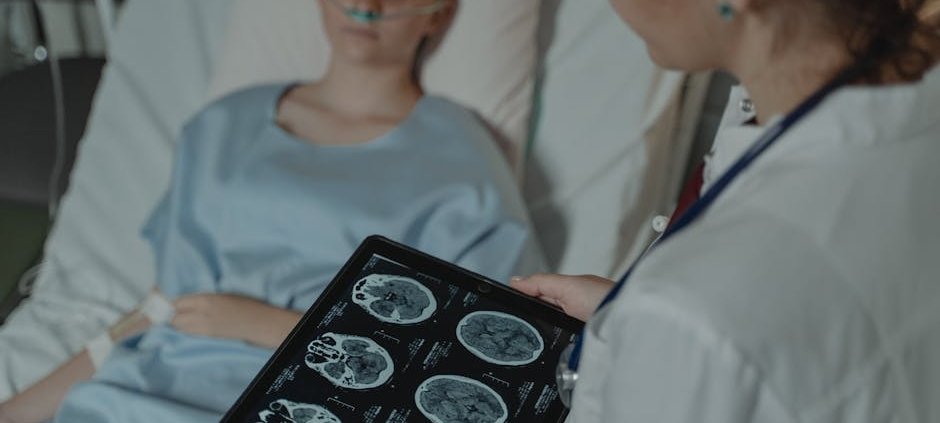Ketamine Pills USA: Top 5 Risks & Benefits 2025
Ketamine pills USA are becoming a point of interest for many seeking speedy solutions to psychiatric conditions. However, before diving into options, there are crucial things to know:
- Not FDA Approved for Psychiatric Use: Ketamine, despite its appeal, is not approved by the FDA for treating any psychiatric disorder. Though it’s researched for conditions like depression and PTSD, FDA approval is pending due to safety and efficacy concerns.
- Compounded Ketamine Risks: When used in compounded forms, without proper medical oversight, ketamine poses risks like sedation, dissociation, increased blood pressure, and potential misuse.
Ketamine was first recognized for its anesthetic properties and is FDA-approved for that purpose. Recently, its rapid antidepressant effects have caught attention, especially in treatment-resistant cases. However, both patients and healthcare providers should proceed with caution, as the FDA warns against unapproved uses without rigorous medical monitoring.

Understanding Ketamine
Ketamine is a dissociative anesthetic that has been used in medical settings for many years. Originally developed as a surgical anesthetic, ketamine is known for its ability to induce a trance-like state while providing pain relief and sedation. This makes it a valuable tool in both human and veterinary medicine.
NMDA Receptor Antagonist
Ketamine works by blocking the NMDA receptor in the brain. This receptor is part of the glutamate system, which plays a crucial role in learning and memory. By inhibiting this receptor, ketamine alters normal neurotransmission. This action is responsible for its anesthetic effects and may also contribute to its potential in treating depression and other psychiatric conditions.
Esketamine
A derivative of ketamine, esketamine, has been developed to target treatment-resistant depression. Esketamine, marketed under the brand name Spravato®, is an FDA-approved nasal spray used under strict medical supervision. Unlike ketamine, which is often administered intravenously or intramuscularly, esketamine provides a non-invasive option for patients. Esketamine is not designed for home use and must be administered in a healthcare setting to ensure safety.

Ketamine’s Dual Role
While ketamine is primarily known as an anesthetic, its potential in treating mental health conditions is gaining attention. The drug’s ability to rapidly alleviate symptoms of depression has sparked interest, especially for patients who do not respond to traditional antidepressants. However, it is crucial to understand that ketamine is not FDA-approved for any psychiatric disorder. Its use in this context remains off-label, and ongoing research is essential to determine its long-term safety and effectiveness.
Despite its therapeutic potential, ketamine is also known for its recreational use. This dual role underscores the need for careful regulation and monitoring to prevent misuse and ensure that patients receive the benefits of ketamine safely.
In summary, ketamine’s primary function as an anesthetic is well-established. Its role as an NMDA receptor antagonist opens up possibilities for treating depression and other conditions, primarily through its derivative, esketamine. However, the medical community continues to explore and refine these applications to maximize benefits and minimize risks.
Ketamine Pills USA: Current Usage and Trends
Ketamine pills in the USA are making waves not just for their medical applications but also for their use as a recreational drug.
Off-Label Use
Off-label use of ketamine is becoming more common, particularly for mental health conditions. Although ketamine is not FDA-approved for treating psychiatric disorders, it is used off-label to manage symptoms of treatment-resistant depression. This refers to cases where traditional antidepressants have failed. Patients and clinicians are turning to ketamine for its rapid antidepressant effects, which can provide relief in a matter of hours rather than weeks.
Treatment-Resistant Depression
Ketamine’s role in addressing treatment-resistant depression is especially significant. For patients who have lost hope with conventional treatments, ketamine can offer a new avenue for relief. Its ability to quickly reduce depressive symptoms, including suicidal thoughts, makes it a valuable option for some individuals. However, this use is still under study, and further research is needed to fully understand its long-term safety and efficacy.
Recreational Use
On the flip side, ketamine is also known as a recreational drug, often referred to by names like “Special K.” Its dissociative effects can lead to a trance-like state, which some users seek out for recreational purposes. However, this use comes with risks, including potential for addiction and adverse side effects like impaired memory and bladder issues.

The dual nature of ketamine—both as a potential treatment for serious mental health conditions and as a recreational drug—highlights the importance of regulation and careful oversight. As ketamine clinics and mail-order options become more prevalent, ensuring that usage remains safe and effective is crucial.
Legal Status and FDA Regulations
When it comes to ketamine pills USA, understanding their legal status and the regulations surrounding them is crucial. Ketamine is classified as a Schedule III controlled substance in the United States. This classification indicates that while ketamine has recognized medical uses, it also has the potential for abuse and dependence. Drugs in this category, like ketamine and Tylenol with codeine, are regulated by the federal government and are only legally available with a prescription.
FDA Warnings
The FDA has issued warnings about the use of compounded ketamine products, especially for psychiatric disorders. Compounded drugs, including ketamine, are not FDA-approved. This means they haven’t been evaluated for safety, effectiveness, or quality before they hit the market. The FDA has highlighted that compounded ketamine is marketed for various psychiatric conditions, such as depression and PTSD, without sufficient evidence of its safety or effectiveness for these uses.
The FDA emphasizes that using compounded ketamine without proper medical supervision can be risky. Potential adverse effects include sedation, dissociation, and changes in vital signs like blood pressure and heart rate. These risks underscore the need for monitoring by a healthcare provider.
Compounded Ketamine
Compounded ketamine refers to ketamine products that are mixed or altered to meet the needs of individual patients. While this can be beneficial when FDA-approved drugs are not suitable, it also introduces risks. Compounded ketamine lacks the rigorous testing and approval process that FDA-approved medications undergo. This absence of oversight can lead to variability in drug quality and potency, posing additional health risks.
Despite the interest in compounded ketamine for psychiatric use, the FDA notes there is no evidence suggesting it is safer or more effective than existing FDA-approved treatments for these disorders. This highlights the importance of consulting with healthcare professionals before considering compounded ketamine as a treatment option.
Navigating the legal landscape and understanding FDA regulations is key to safely using ketamine in the USA. As the conversation around ketamine continues to evolve, staying informed about its legal status and regulatory warnings is essential for both patients and healthcare providers.
Potential Risks and Side Effects
When considering ketamine pills USA, it’s important to understand the potential risks and side effects associated with their use. While ketamine has shown promise in treating certain conditions, it comes with several concerns that users should be aware of.
Addiction
One of the significant risks of ketamine use is addiction. Studies have shown that regular use can lead to symptoms of addiction, such as using more than intended, developing tolerance, and continuing use despite negative consequences. Ketamine can trigger feelings of euphoria, which might lead some individuals to misuse it. It is crucial for users, especially those with a history of substance use disorder, to approach ketamine treatment cautiously.
Psychiatric Events
Ketamine can cause psychiatric events, including hallucinations, vivid dreams, and mood swings. In some cases, high doses can lead to psychosis, where individuals lose touch with reality. This is particularly concerning for people with a history of psychotic disorders, as ketamine might exacerbate these conditions. Frequent recreational use can also result in delusions that persist even after stopping use.
Respiratory Depression
Respiratory depression, a condition where breathing becomes dangerously slow and shallow, is another severe risk associated with ketamine. This risk is heightened when ketamine is used in combination with other depressant drugs, like opioids. The lack of proper medical supervision can increase the likelihood of experiencing this life-threatening side effect.
Understanding these potential risks is crucial for anyone considering ketamine treatment. While ketamine can offer hope for individuals with treatment-resistant conditions, it is essential to weigh these benefits against the possible side effects and risks. Always consult with a healthcare provider to ensure safe and informed use of ketamine.
Frequently Asked Questions about Ketamine Pills USA
Is ketamine FDA approved for mental health treatment?
No, ketamine is not FDA-approved for treating mental health disorders. It is primarily approved as an anesthetic. However, a form of ketamine called esketamine has been approved for treatment-resistant depression. Despite its off-label use for various psychiatric conditions like depression and anxiety, ketamine itself lacks FDA approval for these purposes. Clinics and telehealth providers often promote its use for mental health, but this is not officially sanctioned by the FDA.
What are the side effects of ketamine?
Ketamine can cause a range of side effects. Common ones include:
- Dissociation: Feeling detached from reality or your surroundings.
- Dizziness and Sedation: These can lead to a sense of relaxation or sleepiness.
Serious side effects may include:
- Slow Heart Rate and Breathing: This can be life-threatening, especially without medical supervision.
- Hallucinations and Unusual Thoughts: These can occur during or after waking from anesthesia.
- Urinary Problems: Painful urination or loss of bladder control.
These effects vary by dose and individual response, so it’s crucial to use ketamine under medical guidance.
Is ketamine addictive?
Yes, ketamine has addictive potential. Regular use can lead to addiction, characterized by increased tolerance and compulsive use despite harmful effects. Ketamine’s euphoric effects make it prone to misuse, especially among individuals with a history of substance use disorders. It’s essential to approach ketamine treatment with caution and under professional supervision to mitigate addiction risks.
Conclusion
As we wrap up our exploration of ketamine pills USA, it’s clear that while ketamine has potential benefits, particularly in treating conditions like treatment-resistant depression, it comes with significant safety concerns.
At Buy Ketamine Crystals Online, we understand the complexities surrounding ketamine use. Our products, including pills, are available for purchase without a prescription, offering accessibility to those seeking alternative treatments. However, we strongly advise users to be aware of the potential risks associated with ketamine use. These include addiction, psychiatric events, and serious side effects like respiratory depression.
Given these concerns, future research is crucial. More studies are needed to better understand ketamine’s long-term effects and to develop guidelines for safer use. This research will help ensure that ketamine can be used responsibly and effectively, maximizing its benefits while minimizing risks.
We are committed to providing quality products and information to help you make informed decisions about ketamine use. As the landscape of ketamine research and regulation evolves, we will continue to update our offerings and guidance to reflect the latest findings and safety standards.

































